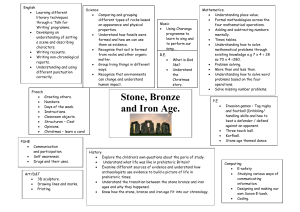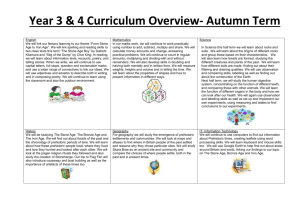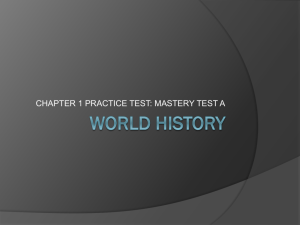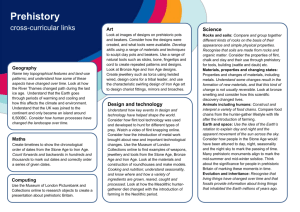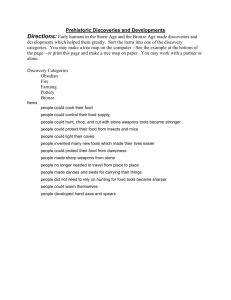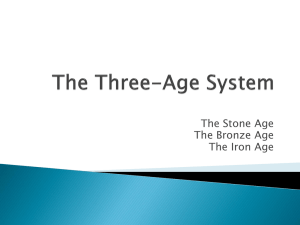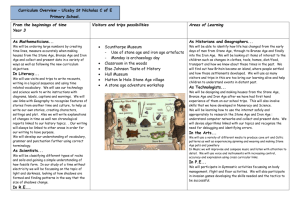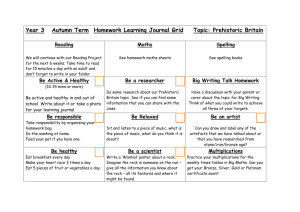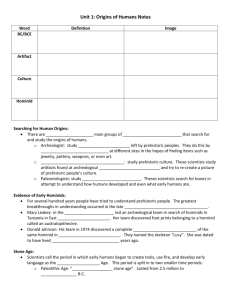Changes in Britain during the Stone, Bronze and Iron Ages
advertisement
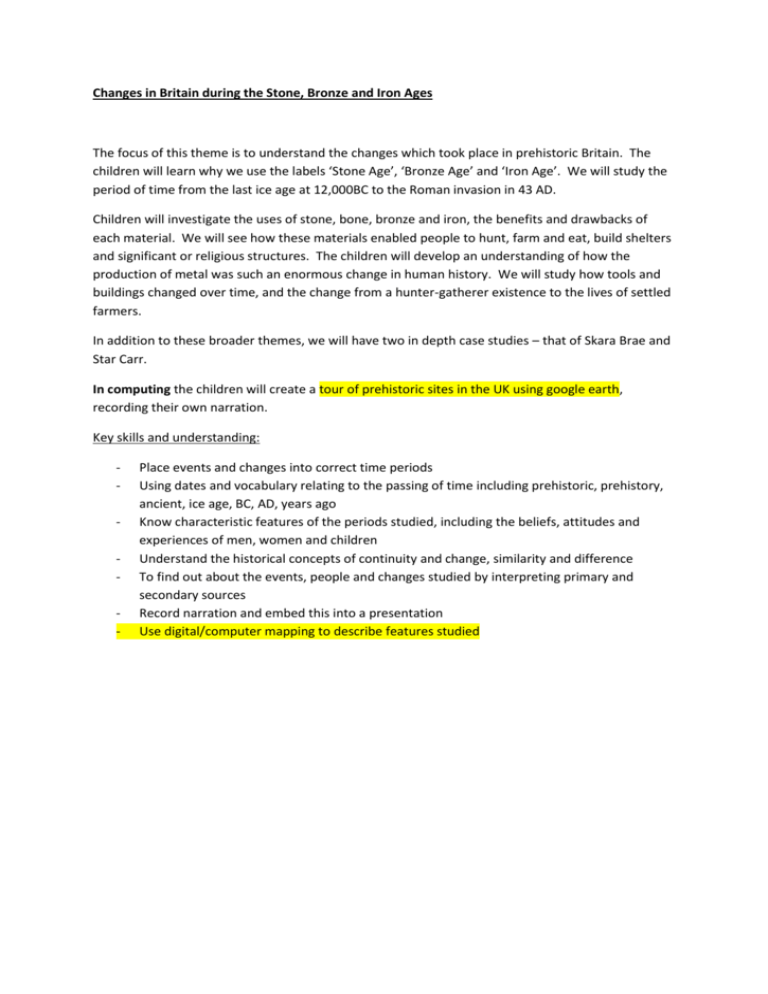
Changes in Britain during the Stone, Bronze and Iron Ages The focus of this theme is to understand the changes which took place in prehistoric Britain. The children will learn why we use the labels ‘Stone Age’, ‘Bronze Age’ and ‘Iron Age’. We will study the period of time from the last ice age at 12,000BC to the Roman invasion in 43 AD. Children will investigate the uses of stone, bone, bronze and iron, the benefits and drawbacks of each material. We will see how these materials enabled people to hunt, farm and eat, build shelters and significant or religious structures. The children will develop an understanding of how the production of metal was such an enormous change in human history. We will study how tools and buildings changed over time, and the change from a hunter-gatherer existence to the lives of settled farmers. In addition to these broader themes, we will have two in depth case studies – that of Skara Brae and Star Carr. In computing the children will create a tour of prehistoric sites in the UK using google earth, recording their own narration. Key skills and understanding: - Place events and changes into correct time periods Using dates and vocabulary relating to the passing of time including prehistoric, prehistory, ancient, ice age, BC, AD, years ago Know characteristic features of the periods studied, including the beliefs, attitudes and experiences of men, women and children Understand the historical concepts of continuity and change, similarity and difference To find out about the events, people and changes studied by interpreting primary and secondary sources Record narration and embed this into a presentation Use digital/computer mapping to describe features studied
